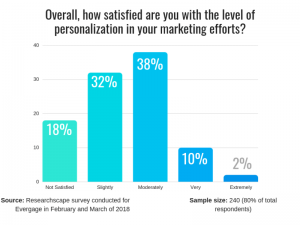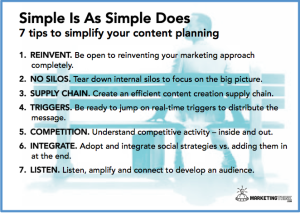If you’ve been in the content creation game for a while, you know how dramatically blogging standards have changed, even in just the past few years.
As you learn more about communication and reaching your audience, your tone and style have to evolve to better connect with them. As you learn more about SEO, you have to change your formatting and editing style to fit its guidelines (which change often, too).
Not only does updating your blogs ensure that you’re providing your audience with the most relevant information, it may also give you a boost with Google’s algorithm.
Blog updates can also save you a ton of time—instead of starting from scratch with ideas, research and creation, you can go in and supplement the research you’ve already done with relevant changes.
There’s really no losing here people!
To help you get started with your blog updates, check out these ideas for sprucing up and refreshing your best work.
1. Find Out Which Blogs Should Be Updated First

Naturally, you’ll want to update your highest-performing blogs first.
After all, if they’re already generating traffic and visitors, it’s important to give those visitors the latest and most accurate information possible.
If you have a CMS (Content Management System) in place, you should be able to access a dashboard that shows you which blogs have the most links, views and engagement through the life of your website.
Google Analytics can also provide in-depth information on which blogs are performing and which aren’t.
Once you’ve got a good arsenal of high-performing blogs ready to update, you can start the process.
2. Update Your Images

If you’ve switched blogging platforms, updated your website or simply learned more about formatting and sizing, you’ll probably need to make some changes to your content’s images.
For instance, when IMA rolled out our new website, we found that a lot of our old blog images were double-posting on our pages. We also found that the sizing was way, way off on our new platform. These issues could have been a death knell in our blog traffic and Google ranking if we hadn’t gone in and made the necessary updates.
Even if you don’t have sizing problems, you might not have chosen high-quality, attractive images when you first published your blog. Either you didn’t know where to find great images, or there simply weren’t that many available for free use when you were initially creating your content.
In 2016, you’ve got far more options at your fingertips.
Check out these great resources for high-quality, beautiful and free images for use on your blog:
With these new archives of great images, you should never rely on a cheesy stock image again.
3. Check for 404s in Your External Links
If it’s been a while since you published a particular blog, some of the links you included in the content might no longer exist. This will shoot your viewer to a 404 page.
404 pages are bad for your content in a couple of ways.
First of all, Google’s job is to serve its users the best possible content that’s out there. If a user searches a term, Google’s algorithm is trained to find the websites that provide the highest-quality content on that search term.
If your website’s content is loaded with 404s, not only does it de-value your content for your viewers, it makes it less attractive to Google.
There may not be a cut-and-dried penalty for 404s, but leaving them in your content makes it less attractive, relevant and valuable for your viewers.
The easiest way to check for 404s is to download a plug-in to help you scan your pages while you’re updating.
4. Skim Your Content for Dated Information

We can only write the things that we know. So it makes sense that our older content reflects events, attitudes and trends that were relevant when we wrote it.
But you have to keep up with the times.
Skim your content for outdated references and information. Change any CTAs that link to outdated offers, promotions or content.
If your blog is locally-focused, it’s vital that you research current events in the area so that you can relay the most up-to-date information to searchers.
5. Don’t Alter the URL
It’s important that you don’t change the URL of your post. If you do, you will have created a new URL that could get your site dinged for duplicate content—a big no-no in the eyes of Google.
If you must, change the title of the post to make it more relevant to current information, but try to retain any important keywords. It is very important, however, that you leave the URL the same.
6. Make Sure You Add an “Updated On” Note for Transparency

It’s important that you viewers know that your content has recently been updated. A short, italicized paragraph at the beginning or end of your content will help maintain transparency and ensure that your viewers know exactly what they’re reading and the timeframe it applies to.
7. Check Your Formatting
If you haven’t updated your blog in a while, you might need to make some SEO-friendly formatting changes.
Make sure you have H2s in your content, and add H3s where it’s relevant.
See lots of blocks of text? Go through and break them up.
See a list of items in paragraph format? Go through and add numbers or bullet points to give your viewers some tasty lists to skim.
Bolding, italics and short sentences are also better for your reader. Make sure your blog capitalizes on opportunities to format well, and you can make your content much more valuable in the future.
8. Add More Images
In 2016, visual content is more important to page performance and engagement than ever before.
If your blog’s content is still wholly relevant, but you still want to make some beneficial updates, consider adding more images! Whether it’s a relevant infographic, a screenshot or just a high-quality photograph, visuals will help your audience engage with your content.
Digital & Social Articles on Business 2 Community
(45)






